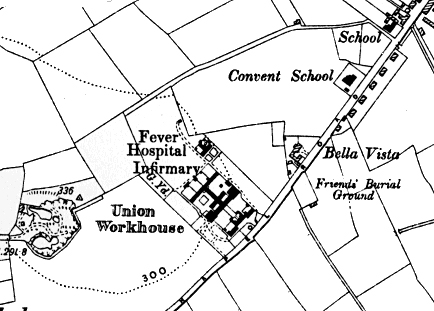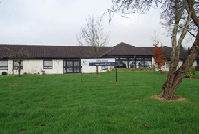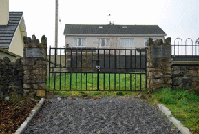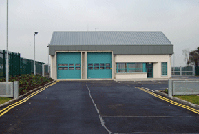



THE UNION WORKHOUSE
Edenderry Poor Law Union was formally declared on the 7th May 1839 and covered an area of 290 square miles. Its operation was overseen by an elected Board of Guardians, 22 in number, drawn from the areas around Edenderry. The Board also included 7 ex-officio Guardians, making a total of 29. The Guardians met each week on Saturday.
The population falling within the Union at the 1831 census had been 35,536 with divisions ranging insize from Ballinakill (population 1,081) to Edenderry itself (4,535).
The new Edenderry Union workhouse was built, by builder Stephen Rowe, on a six-acre site half a mile to the south-west of Edenderry which was bought from Downshire through his agent, Murray. Designed by the Poor Law Commissioners' architect George Wilkinson, the building was based on one of his standard plans to accommodate 600 inmates. Its construction cost £5,300 plus £1,110 for fittings etc. The workhouse was declared fit for the reception of paupers on 21st December 1841, and received its first admissions on 19th March 1842.
The buildings followed Wilkinson's typical layout. An entrance and administrative block at the south-east of the site contained a porter's room and waiting room at the centre with the Guardians' board room on the first floor above.
The main accommodation block had the Master's quarters at the centre, with male and female wings to each side. At the rear, a range of single-storey utility rooms such as bakehouse and washhouse connected through to the infirmary and idiots' wards via a central spine containing the chapel and dining-hall.
The staff consisted of a medical officer, a clerk, a master, a matron, a school master and mistress, a porter and on a part-time basis two chaplains, a relieving officer, a carpenter, a coffin-maker, a tailor and a barber. During the famine in the mid-1840s, a 40-bed fever hospital was erected at the north of the workhouse. Although the Union was built to accomodate 600 inmates it was reported that there were 1,800 there at one stage. From the early 1950s the Union was used by Offaly VEC and the former Headmaster of Edenderry Voc School, Mr Con O'Sullivan (RIP), taught woodwork there. It was also used by Mangan's Coachbuilders before they moved to their factory on the Dublin Rd. The local FCA unit, (11Bty, 6 Fd Arty Regt), had their HQ there and used the main hall and rooms as a training centre and weapon stores. Offaly County Council used the front building as a depot for road maintenance services. In the early 1970s the whole building was totaly demolished and the site levelled for the building of the present day Ofalia House. The cemetery, one of which was adjacent to every Union is to be found to the rear of Ofalia House.










